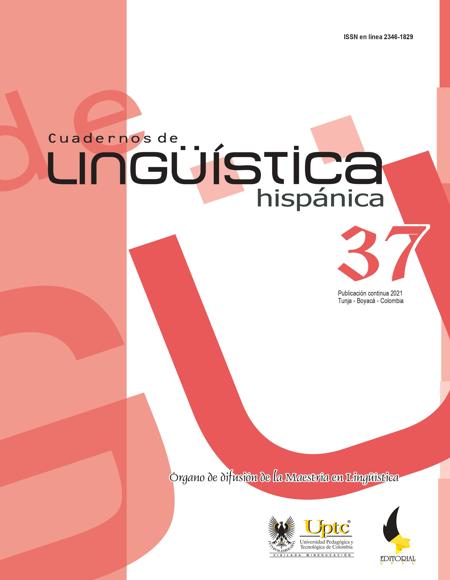Discourse and Identity: Features of Language Classroom Interaction

Abstract
Identity is a continuous process linked to social interaction, in which language and social experiences play an important role (Mead, 1934). The objective of this study was to analyze how the foreign language teacher shapes and builds her professional identity in the classroom interaction. For this, Conversation Analysis (CA) was carried out and the interactive features on which communication is supported in the classroom were identified and interpreted. A twenty-minute English class was recorded, three minutes of it transcribed, and five extracts analyzed. The results showed the interaction characteristics: repair, question and answer system (questioning), and the use of non-verbal communication. The analysis of interaction features allowed to conclude that, according to the proposed theory, the construction of the teacher’s professional identity is a process in continuous transformation. Transformation that takes place in the classroom interaction and is perceptible through the change in the habitual actions that occur when interacting or when the teacher executes new actions as a product of this interaction.
Keywords
identity, classroom interaction, conversation analysis
References
Bambaeeroo, F. & Shokrpour, N. (2017). The Impact of the Teachers' Non-Verbal Communication on Success in Teaching. Journal of Advances in Medical Education & Professionalism, 5(2), 51–59.
Beijaard, D., Verloop, N., & Vermunt, J. (2000). Teachers' Perceptions of Professional Identity: An Exploratory Study From a Personal Knowledge Perspective. Teaching and Teacher Education, 16, 749-764. http://dx.doi.org/10.1016/S0742-051X(00)00023-8
Blommaert, J. (2005). Critical Discourse Analysis. In Discourse: A Critical Introduction (Key Topics in Sociolinguistics). Cambridge University Press. http://dx.doi.org/10.1017/CBO9780511610295.003
Brown, H.D. (2001). Teaching by principles (2nd Ed.). Longman.
Bucholtz, M. & Hall, K. (2005). Identity and Interaction: A Sociocultural Linguistic Approach. Discourse Studies, 7, 585-614. http://dx.doi.org/10.1177/1461445605054407
Clandinin, D. J., Downey, C. A., & Huber, J. (2009). Attending to Changing Landscapes: Shaping the Interwoven Identities of Teachers and Teacher Educators. Asia-Pacific Journal of Teacher Education, 37(2),141-154. http://dx.doi.org/10.1080/13598660902806316
Connelly, F.M., & Clandinin, D.J. (1999). Shaping a Professional Identity: Stories of Educational Practice. Teachers College Press.
De Fina, A. (2018). Discourse and Identity. In T. van Dijk (Ed.), Discourse Studies: A Multidisciplinary Introduction (pp. 263-282). Sage.
Ellis, R. (1998). Teaching and Research: Options in Grammar Teaching. Tesol Quarterly, 32(1), 39-60.
Fajardo, J. (2013). What Makes a Teacher’: Identity and Classroom Talk. Cuadernos de Lingüística Hispánica, (22), 127-146.
Foucault, M. (1980). Power/knowledge. Selected Interviews and Other Writings 1972-1977. Pantheon.
Gee, J. P. (1996). Social Linguistics and Literacies: Ideology in Discourses. (2nd ed.). Taylor & Francis.
Hoyle, E., & John, P. D. (1995). Professional Knowledge and Professional Practice. Cassell.
Johnson, K. F. (1995). Understanding Communication in Second Language Classroom. Cambridge University Press.
Liddicoat, A.J. (2007). An Introduction to Conversation Analysis. Continum.
MacLure, M. (1993). Arguing for Yourself: Identity as an Organizing Principle in Teachers’ Jobs and Lives. British Educational Research Journal, 19, 311–322.
Mead, G. H. (1934). Mind, Self and Society. University of Chicago Press.
Nunan, D. (1987). Communicative Language Teaching: Making It Work. ELT Journal 41(2), 136-45.
Rashid, B. (2014). Addressing Iraqui EFL Teacher/Learner Discourse Interactions in Task-Based Classrooms. Advances in Language and Literary Studies, 5(6).
Sacks, H. (1979). Hotrodder: A Revolutionary Category. in G. Psathas (ed.) Everyday Language: Studies in Ethnomethodology (pp. 7–14). Irvington.
Seedhouse, P. (2004). Conversation Analysis Methodology. Language Learning, 54(S1), 1-54. https://doi.org/10.1111/j.1467-9922.2004.00268.x
Skuse, G. (2012). A Conversation Analysis Approach to Interaction within an English as a Foreign Language (EFL) Class Information Gap Task. University of Birmingham, Centre for English Language Studies.
Van Lier, L. (1988b). What’s Wrong with Classroom Talk? Prospect, (3), 267-283.
Walsh, S. (2013). Classroom Discourse and Teacher Development. Edinburgh University Press.
Wodak, R. & Van Dijk, T. A. (Eds) (2000). Racism at the Top. Drava Verlag.
